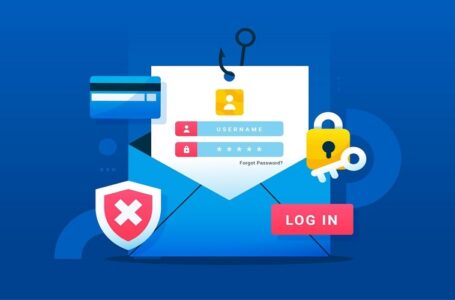Shirofune Enhances Shopify Integration with Google Analytics 4’s Data-Driven Attribution Model
How To Beat Your Competition Using Only SERPs

What Is A SERP & How Does It Help Me Beat My Competitors?
The outcomes of any search on search engines like Google, Bing, and others are displayed on search engine results pages, or SERPs. The data found within each individual SERP result is known as SERP data. This information is openly available on the web and can help you strengthen and advance your position in international search results. You may obtain SERP data from both paid and organic search results, giving you complete insight into what your rivals are doing.
You can use SERPs to:
- Uncover hidden trends.
- Improve paid advertising.
- Expose content gaps.
- Understand how content performs from region to region.
But how do you easily find this information to better your content? Have it automatically collected by a SERP scraper. Get the data immediately, so you can start building your SEO strategy faster.
Easily Collect Free Competitor Information Using SERP Scrapers
SERP data from several search engines can be quickly and automatically collected using SERP scrapers, or SERP AIs. In conclusion, there is a lot of valuable information to gather because of the various elements that influence a SERP, such as location, search history, and device. It is still challenging to acquire manual SERP data due to these ever-increasing elements. SERP scrapers eliminate the need for manual labour. As an alternative, these SERP AIs enable you to automate the data collection process by pulling web data from a myriad of sources simultaneously, in real-time, in order to acquire massive amounts of data. As the size of the work grows, you consequently gain more visibility into competition research, which ultimately saves time.
Automate Competitor Research & Free Up Bandwidth With SERP Scrapers
To fully automate SERP data collection, companies are running their SERP scrapers through public web data collection infrastructures.
SERP scraper automation can help you:
- Instantly see what SERP content is working for your competitors.
- Geotarget requests from users to understand different targeting techniques.
- Understand SERP intent from all angles, down to how a device matches users’ needs.
- Unlock content behind walls that block search engine bots, such as CAPTCHA solving.
How To Setup Your Own SERP Scraper
Some companies create their own SERP scrapers from scratch, but this can be a time-consuming option. Luckily, there are other, faster options.
Use SERP APIs
To acquire online data from the result pages, many web data vendors offer SERP APIs that require little to no coding knowledge. These tools automatically gather information from the result pages and are specifically made to target all the main search engines. It’s time to configure the AI and start gaining access to free competitor data once you’ve selected your SERP scraper.
Configure Your Research Parameters
Using your SERP API dashboard, you will be able to designate the different parameters for search requests, custom to your workflow and data needs.
You can choose specific parameters for your scrape, such as:
- Geo-targeting.
- Language used.
- Search filters.
- Safe mode SERPs.
- Device used.
- SERP features, such as maps, shopping, hotels, flights, news, etc.
Increase SERP Access
Similar to data collection infrastructure, some SERP AI tools have unblocking technology to help your scraper search like a real person. Your scraper should be able to bypass CAPTCHA checks in order to help you get the full competitor breakdown.
Setup Automatic Algorithm Updates
The SERP API you choose should be able to make updates when changes to the results page are made by the search engines. This is specifically helpful considering there are constant changes being made to the structure and algorithms of SERPs, and new features are being added to these pages more and more frequently. If your scraper is not up to date, it will either return inaccurate data or be unable to read the page and deliver the data desired by the request.
What To Look Out For If You Create An In-House SERP Scraper
If you were to create a scraper in-house, you would need to regularly update the scraper’s code manually to ensure that it matches the structure of the website. However, when using a SERP API designed by a web data provider, you do not need to be bothered with this process. Providers typically monitor changes to all the major search engines and update the scraper accordingly to ensure accurate and uninterrupted real-time data collection.
How To Compile SERP Data Using A SERP Scraper – A Simple Example
Let’s say you wanted to collect public web data on a hotel – including prices, availability, reviews, and more.
How To Conduct Hotel Competitor SERP Research By Hand
If you were to research this SERP manually, Google Search and Google Travel are great tools to use to uncover free research and data.
- Enter the hotel’s name into Google Search.
- Notice the initial details in the resulting knowledge graph, such as reviews, specific arrival and departure dates, and the number of guests.
- Compare prices to understand what competitive packages you can offer to compete.
- Uncover booking popularity in order to drive your own campaigns and sales.
- Continue to manually dive deeper and uncover more data.
From here, you can begin to create your strategy, which will open up more avenues to manually research more options and data points.
How To Conduct Hotel Competitor SERP Research Automatically
Through SERP API, you can do all of that automatically. Steps 1 – 5 are completed by SERP APIs, and include new parameters, such as price comparisons, dates, ages of the guests, whether free cancellation is included, and more to collect additional price combinations. Competitor research is done for you, so you can start creating your new strategy.
An example of what these searches would look like can be found here.
Make It Easy: Let Us Scrape SERPs For You
Fundamentally, SERP data today gives digital marketers the foundation and guidance they need to raise their positions in search engines all around the world. This necessitates the use of a significant amount of public web data. The manual procedure this work originally involved has been greatly enhanced by the use of SERP scrapers created by web data providers to automate the web scraping process and get correct results from the web in real time. Overall, with the help of web data providers, gathering large-scale amounts of SERP data is a much more manageable task than it was even a few years ago, and now, companies are able to sit back, relax, and watch the data roll in – saving both time and effort in the long-run, and helping companies focus on what matters most: the insights.




